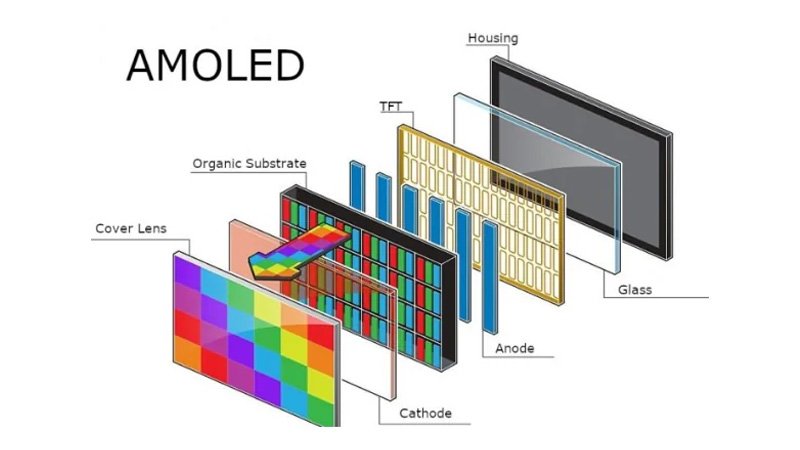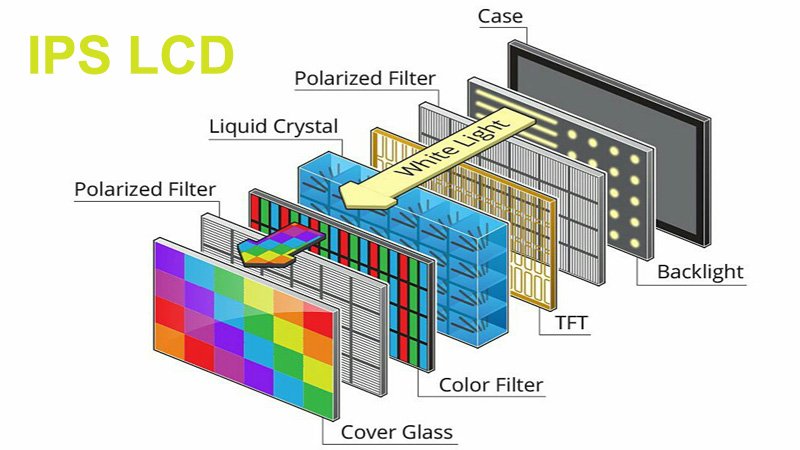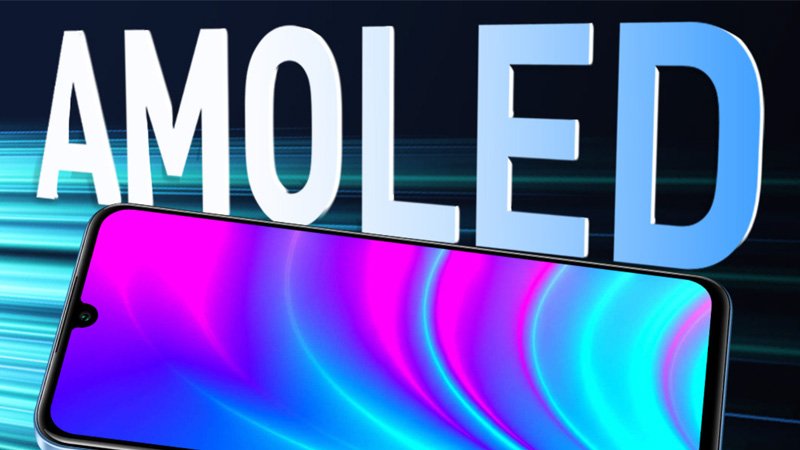Manufacturers of all types of screens displays and monitors employ various technologies to optimize their products and give viewers an enhanced aesthetic, immersive experience. However, technological differences may impact the experience and affect your choice of display technology.
IPS and AMOLED are two technologies companies use to illuminate a particular screen and process imaging in a particular display technology. What are their differences, and how can they affect your choice of a gadget, smartphone, or display technology?
1. What is IPS and AMOLED?
LCD TVs use three types of illumination to create light and process imaging. IPS is among those three and has been widely employed by many manufacturers because it can provide more precise color and imaging, leading to greater clarity.
IPS stands for In-Plane Switching. In this display, the liquid crystals rotate parallel to the panels, allowing light to pass and creating pictures and images.
Compared to other illumination strategies, such as TN (twisted-nematic) and VA (vertical alignment), IPS creates more vibrant colors and better contrast. For this reason, many consider IPS to be better, and many consumers prefer IPS over TN and VA displays.
AMOLED, meanwhile, utilizes direct lighting to illuminate the liquid crystal and show images on the screen. AMOLED stands for Active-Matrix Organic Light Emitting Diodes, and it uses organic materials to process illumination in a screen or display technology.
As such, many consider AMOLED to be more energy efficient. The excellent utilization of energy for processing images, combined with saved electricity costs, makes gadgets employing AMOLED appealing to most consumers.
With those benefits comes a tremendous aesthetic experience and a more immersive viewing experience for the users. The direct lighting of pixels causes images to be more precise and brighter. At the same time, it can have darker blacks, offering excellent contrast compared to other displays.
AMOLED provides fantastic clarity and image precision for most display technologies, making it the display screen of choice for some manufacturers.
Since IPS and AMOLED are proven to provide a wonderful aesthetic experience, it behooves us to discuss them in detail and make a more in-depth comparison between the two.

2. Comparing IPS and AMOLED: Similarities
Applicability
IPS and AMOLED have various applications. Manufacturers in different industries, from gadgets and watches to display technologies such as TVs and monitors, utilize them because of their efficiency in enhancing aesthetics.
Many smartphones utilize either IPS or AMOLED because of their ability to provide an enjoyable aesthetic experience. That is because of the rich color texture and excellent color contrast. Gaming monitors also employ either because of high refresh rates and response time.
Precise Imaging
There are significant differences between IPS and AMOLED in terms of colors. However, on balance, and in comparison, with other technologies, both have excellent color contrasts and provide precise colors, which are vital for accurate imaging and better clarity.
It is especially essential for certain display technologies, like gaming monitors. Finer details and rich, vibrant colors can significantly impact your gaming experience. IPS and AMOLED can enhance that experience by offering you the best in aesthetics, colors, and brightness.
Viewing Angle
Manufacturers love AMOLED because of its superior viewing angle, which is probably one of the best in the business. It can provide clear vision up to more than 80 percent of the angle away from the center. The curved versions enhanced clarity for specific display technologies like TVs and monitors, providing the same vision despite the angle.
IPS provides much the same accuracy in terms of viewing angle. It can give you the exact image from nearly anywhere. That makes both the ideal display screens for those display technologies designed for watching together. They are also ideal for display technologies where you have a particular audience, like competitive gaming.

3. Comparing IPS and AMOLED: Differences
There are some essential differences between IPS and AMOLED, among these are:
Backlights
The IPS technology necessitates more lights to illuminate the display screen and show images. Due to its inherent technology and materials, AMOLED does not need backlights for screen imaging.
For this reason, IPS has more backlights than AMOLED. THEY need more lights to create better illumination and bright colors.
Color and Contrast
Both exhibit excellent clarity and precise imaging. However, IPS has brighter lights than AMOLED. IPS provides better contrast and resolution when viewed under direct light or sunlight.
Energy Efficiency
LED technology, in general, is energy efficient, but more so with AMOLED using organic material for its technology. The fewer backlights mean it consumes less energy than IPS displays.
More so, energy utilization is efficient, meaning it does not waste energy and maximizes it by optimizing clarity and precision with fewer energy consumptions.
IPS, by contrast, can up your electricity bills and energy consumption. That is primarily due to having backlights for the display screen.
Design
IPS panels are thicker than AMOLED panels because they have backlights. Because of this, gadgets and display technologies using IPS panels are heavier than those using AMOLED panels.
AMOLED is thinner and lighter than IPS, and its flexibility makes it a favorite among manufacturers. It allows for various applications, from entertainment to medical technology.
Televisions employing AMOLED panels, for instance, are ideal for mounting on walls. Therefore, they are in demand in schools and other institutions needing display technology for conferences, lectures, and the like.
Price
As surprising as it may seem, despite having no backlights, AMOLED is far more expensive than IPS. The advanced technology needed, and the materials used to create AMOLED panels drive the price up.
In contrast, IPS is generally less expensive. That makes it a favorite among those who want a gadget or display technology that is affordable yet reliable when giving that aesthetic pleasure.

4. Which is Best for You (IPS Vs AMOLED)?
Choosing something with either IPS panels or AMOLED will ultimately depend on practicality and use. Since both can give the immersive experience you want because of their aesthetic aspects, you must consider other factors.
IPS is thicker, and thus, gadgets, smartphones, and display technologies employing them are heavier. AMOLED is thinner and lightweight. If you always carry your smartphones and laptops or move your monitors elsewhere, you might consider weight for your convenience.
The design, like slim smartphones and laptops and curved designs for certain display technologies, makes AMOLED aesthetically appealing to many. Manufacturers use AMOLED’s superior flexibility to design gadgets and display technologies that appeal to your taste and preference.
IPS consumes more energy and can increase electricity costs. The sheer number of backlights drains your battery. If you always carry your smartphones or gadgets, you must have a reliable power source nearby to continue using them.
Gadgets and smartphones with AMOLED displays consume less energy; therefore, they are best when you are always outside. Indoors, they consume less electricity and use power efficiently to maximize what AMOLED can offer. However, this is only concerning energy efficiency.
Color contrast and brightness might be an issue if you use your gadget outdoors. IPS is undoubtedly better in this regard than AMOLED, but we are talking here about gadgets only.
If we talk of other display technologies, such as TVs or monitors, IPS provides better color and image precision due to the use of more backlight. Considering what it can give in color, precision, brightness, and even viewing angle, indoor or outdoor, having some display technology to enjoy something makes sense.
IPS, therefore, makes sense for those who are into finer details and enjoy watching entertainment. No wonder film enthusiasts, gamers, and those watching content where superior clarity and precision imaging are paramount will go for something with an IPS display.
It will make even more sense if that display technology is affordable. Though you can save energy costs in the long run, buying something with an IPS display can already save money at that moment.
Manufacturers try to innovate and develop technologies that can drive prices lower, making their products affordable to most consumers. This is the reason for IPS’s continuing appeal and why makers of AMOLED and those using it try to find ways to manufacture them at a lesser cost.
It would be best to balance your needs, practicality, usability, nuances that may affect your viewing experience, and the aesthetic appeal of the display technology. After considering everything, choosing between an IPS or AMOLED display will be much easier.

5. Final Thoughts
IPS and AMOLED are among the technologies manufacturers employ to give consumers the best aesthetic pleasure that can give you the best possible immersive experience.
Both are excellent in clarity and image precision. Both have excellent viewing angles, higher refresh rates, and a certain level of efficiency that makes them ideal for viewing and other applications.
However, there are differences in price, size and design, weight, the exact nature of color and brightness, and energy efficiency. You can decide which is best for you by balancing those things.



